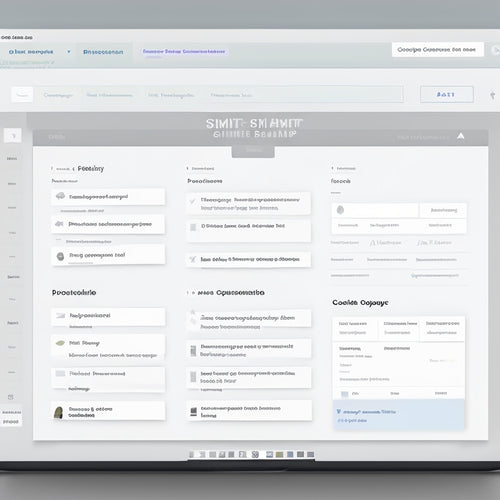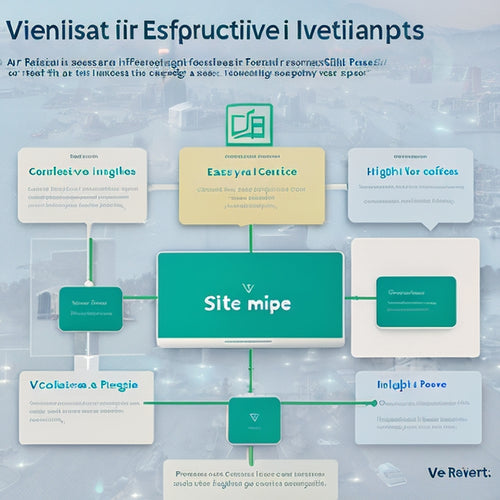Benefits for Ecommerce Brands
Share
Shoppable videos have emerged as a powerful tool for ecommerce brands, providing numerous benefits that contribute to their overall success. This article explores the advantages of incorporating shoppable videos into an ecommerce strategy, including increased brand awareness, enhanced customer engagement, improved conversion rates, higher sales, and a competitive advantage in the market.
By analyzing data-driven insights and adopting a creative and strategic approach, this article aims to provide valuable information for ecommerce brands seeking to harness the potential of shoppable videos. The goal is to achieve greater success and foster a sense of belonging within their target audience.
- Enhanced customer engagement and conversion rates through shoppable videos
- Valuable data insights and targeted marketing opportunities
- Competitive advantage and improved customer trust
- Improved customer experience and seamless integration with social media
Increased Brand Awareness
Increased brand awareness is one of the benefits that ecommerce brands can derive from using shoppable videos. In today's digital age, where social media presence plays a significant role in shaping consumer behavior, leveraging shoppable videos can be a strategic move to increase brand visibility. By incorporating targeted advertising techniques within these videos, ecommerce brands have the opportunity to reach their desired audience effectively.
Shoppable videos provide an interactive and engaging platform for brands to showcase their products or services while allowing viewers to make purchases directly. This seamless integration of content and commerce enhances user experience and encourages potential customers to explore the brand further. Moreover, by strategically placing these videos on social media platforms with a substantial user base, ecommerce brands can tap into a vast pool of potential customers.
Targeted advertising within shoppable videos allows brands to tailor their message according to specific demographics or interests. By analyzing user data, brands can identify their target audience accurately and deliver personalized content that resonates with them. This not only increases the chances of conversion but also fosters a sense of belonging among consumers who feel understood by the brand.
In conclusion, increased brand awareness is a significant benefit that ecommerce brands can achieve through the use of shoppable videos. By harnessing the power of social media presence and targeted advertising, these videos create opportunities for engagement and conversion while nurturing a sense of belonging among consumers.
Enhanced Customer Engagement
Enhancing customer engagement involves creating a strong connection between the audience and the content, leading to active participation and prolonged interaction. This is crucial for ecommerce brands as it fosters brand loyalty and increases the likelihood of conversions. Shoppable videos offer an innovative way to enhance customer engagement by providing interactive experiences that captivate viewers.
-
Interactive experiences: Shoppable videos allow customers to engage with the content in real-time, enabling them to interact with products showcased in the video. They can click on items of interest, view additional details, and make purchases directly within the video itself. This interactivity adds an element of excitement and involvement, making customers feel more engaged with the brand.
-
Personalized recommendations: Shoppable videos can leverage customer data to provide personalized product recommendations based on individual preferences and browsing history. By tailoring the content to suit each viewer's interests, ecommerce brands can deliver a more personalized shopping experience. This not only enhances customer engagement but also increases the chances of conversion as customers are more likely to purchase products that align with their preferences.
Incorporating shoppable videos into ecommerce strategies can significantly enhance customer engagement by offering interactive experiences and personalized recommendations. By engaging customers through these immersive experiences, brands can establish a stronger connection with their audience and ultimately drive higher levels of sales and brand loyalty.
Improved Conversion Rates
The incorporation of interactive and personalized video experiences in ecommerce strategies has been shown to positively impact conversion rates. By providing personalized recommendations and creating an interactive user experience, ecommerce brands are able to enhance the shopping journey for their customers, ultimately increasing the likelihood of conversions.
Personalized recommendations play a crucial role in improving conversion rates. When customers receive tailored suggestions based on their preferences and previous interactions with the brand, they feel understood and valued. This personal touch creates a sense of belonging and encourages them to make a purchase. Additionally, personalized recommendations help customers discover new products that align with their interests, further increasing the chances of conversion.
Furthermore, interactive user experiences engage customers on a deeper level and drive conversions. Shoppable videos allow consumers to interact with the content by clicking on specific products showcased within the video itself. This level of interactivity not only makes the shopping experience more enjoyable but also provides instant access to relevant product information, pricing details, and purchasing options. The seamless integration of interactive elements into videos fosters a sense of excitement and curiosity among consumers, motivating them to explore further and convert.
In conclusion, incorporating personalized recommendations and interactive user experiences through shoppable videos can significantly improve conversion rates for ecommerce brands. By leveraging these strategies effectively, brands can create meaningful connections with their audience while driving sales growth.
Higher Sales
Higher sales can be achieved by implementing strategies that focus on personalized recommendations and interactive user experiences in ecommerce. By utilizing targeted marketing techniques, ecommerce brands can tailor their promotions and advertisements to specific customer segments, increasing the likelihood of a purchase. This approach allows brands to reach their target audience more effectively and generate higher conversion rates.
In addition to targeted marketing, fostering customer loyalty is another crucial factor in driving higher sales for ecommerce brands. By providing exceptional customer service, offering exclusive discounts or rewards programs, and creating a seamless shopping experience, brands can build strong relationships with their customers. This not only encourages repeat purchases but also leads to positive word-of-mouth recommendations and increased brand awareness.
To paint a picture for the audience, consider the following scenario:
- Personalized Recommendations:
- A fashion retailer utilizes data analytics to understand its customers' preferences and behavior. Based on this information, the retailer recommends relevant products to each individual shopper through personalized emails or pop-up notifications.
-
The customer receives these recommendations and feels valued by the brand's effort to cater specifically to their interests.
-
Interactive User Experiences:
- An online home decor store implements augmented reality technology that allows customers to virtually place furniture items in their own homes before making a purchase.
- Customers are delighted by this interactive experience as it helps them visualize how the products will look in their space, leading to increased confidence in their buying decision.
By employing targeted marketing strategies and focusing on building customer loyalty through personalized recommendations and interactive user experiences, ecommerce brands can drive higher sales while establishing lasting connections with their customers.
Competitive Advantage
One effective strategy for achieving a competitive advantage in ecommerce is by implementing innovative technologies and offering unique features that differentiate the brand from its competitors. In order to gain a competitive edge, ecommerce brands must conduct thorough competitive analysis to understand their rivals' strengths and weaknesses. By identifying gaps in the market and leveraging emerging trends, brands can position themselves strategically to meet customer needs more effectively than their competitors.
Market positioning plays a crucial role in gaining a competitive advantage. Ecommerce brands should aim to establish themselves as leaders in their niche by offering products or services that are distinct and superior to what others provide. This can be achieved through shoppable videos, which allow customers to interact directly with the content they are watching and seamlessly make purchases without leaving the video platform.
By incorporating shoppable videos into their marketing strategies, ecommerce brands can enhance customer engagement and increase conversion rates. These videos enable customers to visualize products in action, making them more likely to make informed purchasing decisions. Moreover, shoppable videos provide valuable data insights that can inform future marketing campaigns and help refine market positioning strategies.
In conclusion, ecommerce brands stand to gain significant benefits by utilizing innovative technologies such as shoppable videos. By conducting competitive analysis and strategically positioning themselves in the market, these brands can differentiate themselves from competitors and attract a loyal customer base who values unique experiences and convenience while shopping online.
Frequently Asked Questions
How can shoppable videos help improve customer retention and loyalty?
Improving customer engagement and boosting conversion rates are two key benefits of using shoppable videos. These interactive videos allow customers to seamlessly make purchases while watching the content, leading to increased customer retention and loyalty.
What are some examples of successful ecommerce brands that have used shoppable videos to increase their sales?
Some successful ecommerce brands that have used shoppable videos to increase their sales include Sephora, ASOS, and Nordstrom. These brands have leveraged the benefits of shoppable videos to engage customers and drive conversions, resulting in improved sales performance.
Are there any specific platforms or tools that are recommended for creating shoppable videos for ecommerce brands?
Recommended platforms and video marketing tools for creating shoppable videos for ecommerce brands include Shopify, Wistia, Cincopa, and Viewbix. These platforms offer features such as interactive overlays, product tagging, and analytics to enhance the effectiveness of video marketing campaigns.
Can shoppable videos be effective for all types of products, or are there certain industries that benefit more from this marketing strategy?
Shoppable videos can be effective for all types of products, but they may have a greater impact in certain industries. In the fashion industry, shoppable videos can enhance the shopping experience for clothing and accessories. Similarly, in the home decor industry, they can enhance the shopping experience for furniture and decor products.
How can ecommerce brands effectively measure the success and impact of their shoppable videos on their overall marketing efforts?
Measuring the success of shoppable videos and their impact on marketing efforts can be achieved through data-driven analysis. Key metrics such as click-through rates, conversion rates, and overall sales can provide insights into the effectiveness of these videos in driving customer engagement and boosting e-commerce brand performance.
Related Posts
-
Best Sitemap Builder Shopify Apps for Your Business
This article examines the best sitemap builder Shopify apps available for businesses. It presents an objective analy...
-

Does Shopify Automatically Submit a Sitemap
This article examines the functionality of Shopify in relation to automatic sitemap submission. The focus is on the ...
-

Does Having a Sitemap Help SEO
This article examines the potential impact of sitemaps on search engine optimization (SEO) practices. It explores th...

